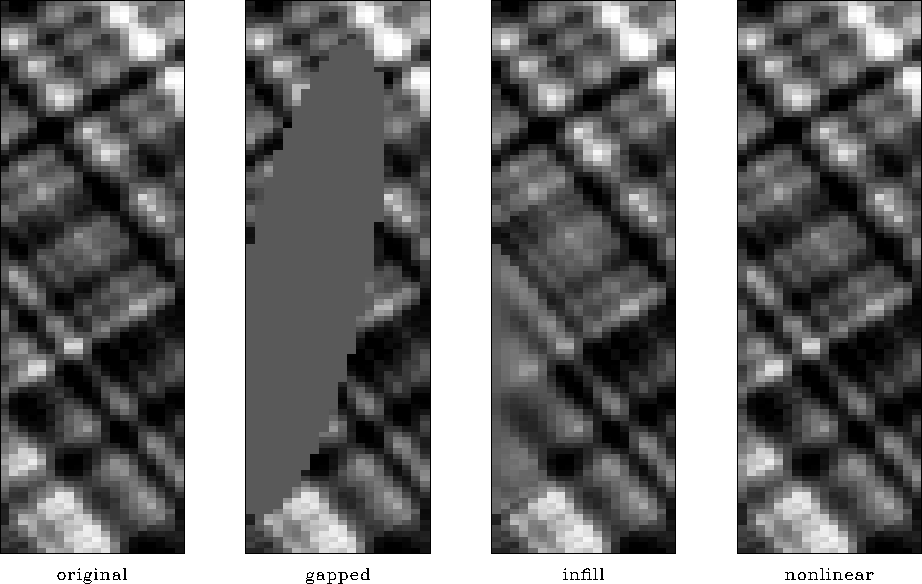We solved the same problem using Gockenbach's HCL_UMin_lbfgs. The functional we minimized, was the norm-squared of internal convolution of the data-set with the prediction-error filter. To use the BFGS solver, we had to construct the functional to take a single vector argument. Thus, we combined the data-set and filter into a HCL_ProductVector. Specifically, we minimized the functional
![]()
Here, represents internal convolution, and the subscripts f and d represent the filter and the data, respectively. For both the filter and the data, there are known components, , which are given, and unknown components, , for which we solve. Finally, the 's represent masking operators which zero the known components of the data or filter. Thus, we find a filter, , and data, , which are constrained to contain known values. A prediction-error filter is most useful in interpolating missing data, when it nearly zeroes the known data under convolution. That explains why we minimize the norm of . To keep the resulting filter from simply being zero, we constrain it to contain a 1 by setting as appropriate for a prediction-error filter.
Because the functional, g, is based on a bilinear operator, , using a general nonlinear minimizer is probably unwarranted. Claerbout has a nonlinear solver which takes advantage of the bilinear property of convolution. His results for this synthetic data problem appear similar to ours. Both appear to approximate the original data very well. So, although we probably applied a solver which was too general, we learned that it is relatively easy to use HCL_UMin_lbfgs. We envision applying it successfully to future problems involving more complicated functionals. Our results are shown in Figure 1.
 |
It should be noted that although our nonlinear solver's result is more accurate than the infill method's, it took an order of magnitude longer to calculate. In fact, had we let the infill solver run for more iterations, it may have converged to a better answer.